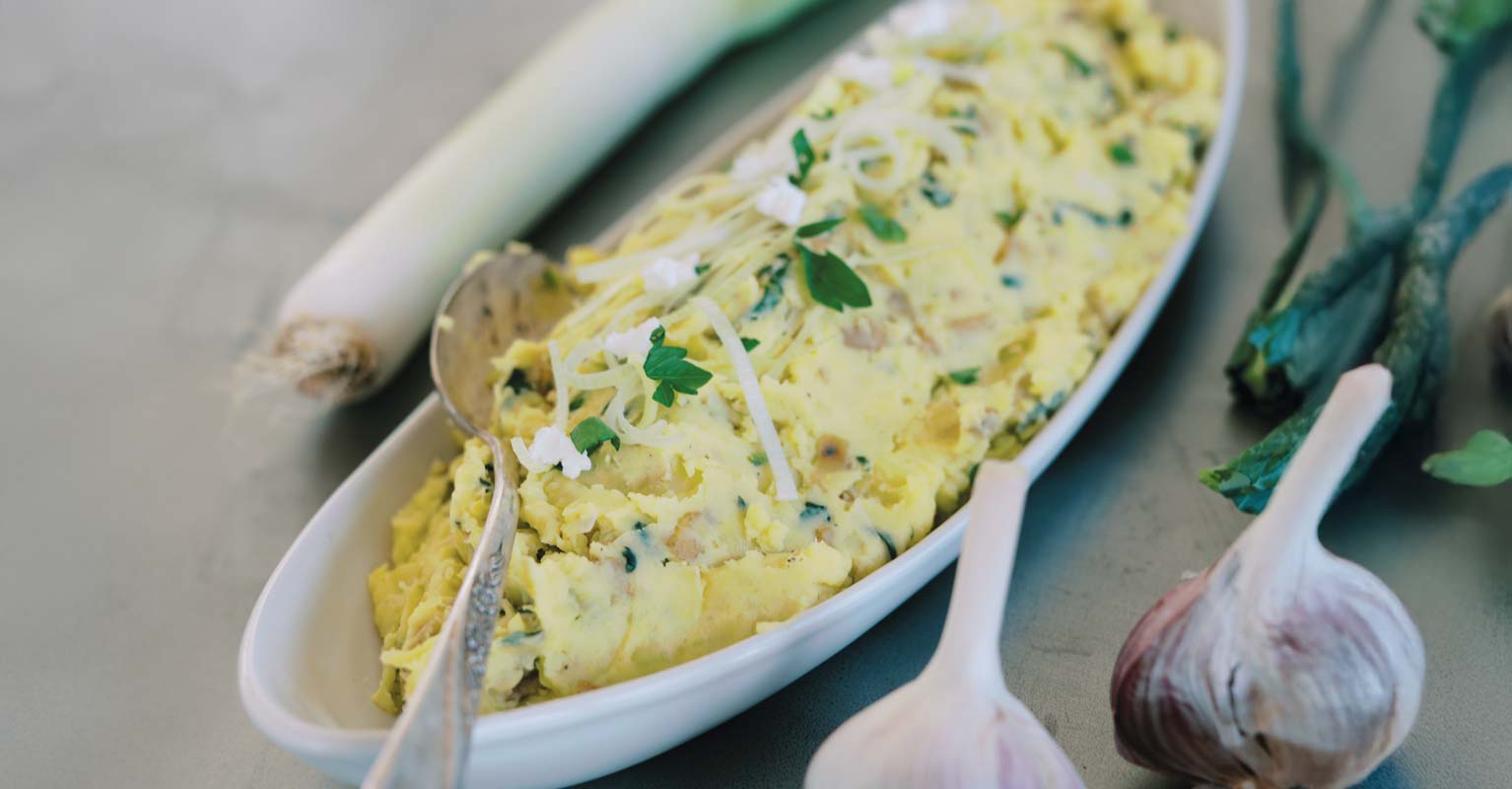We’ve all heard about the benefits of bone broth with its condensed vitamins, minerals, and amino acids (collagen). But what makes a broth different from a stock? Some say the difference is that a broth is sipped, and a stock is a base for sauces and soups. Simply put, broth is seasoned or salted and stock is not. Either way, though, the basics are the same.
For vegetables, every stock or broth is composed of a mirepoix— or flavor base made from carrots, celery, and onions. You can add whatever additional veggies you like, such as zucchini, tomato, leeks, or scallions, but the majority should be carrots, celery, and onions in order to make a flavorful and balanced broth. For an Asian-style bone broth or umami for ramen, you can add dried or fresh shiitake and dried seaweed. One of my favorite broths is made using the remnants of a classic Chinese chicken dish: White Cut Chicken. This is easy, and you not only get a great simple broth, but a couple of dinners too.
The basic herbs I like to use are garlic, bay leaf, rosemary, thyme, parsley, oregano, and marjoram. For a more Asian flavor, use herbs and roots like ginger and scallion whites. Add sage to the “basic” herbs for a flavorful chicken or bird stock. Don’t forget to add the spices. Black peppercorns are a staple for all broths. Spices like star anise, fennel seed, Szechuan peppercorns, and nutmeg can also add a complex dimension to the flavor of your broth.
For bones, don’t think you’re limited to just beef, chicken, or pork. I have made some amazing broths with bison, elk, venison, game birds, or without using bones at all (more on that later). Bone choice does matter, though. Using long leg or pipe bones evenly mixed with leg joints offers the most collagen. Chicken or game bird backs, necks, and wing bones make for excellent chicken bone broth.
Bones are usually roasted first to enhance the flavor of the finished broth, but you can make less-intense broths if you don’t roast the bones. If you go this route, however, I would highly recommend covering the bones in cold water and then bringing to a boil. Turn off the heat, remove the bones, and discard the water before making the broth. This does a few things, like removing impurities and blood. You can also soak the bones in cold water and change out the water every 30 minutes until it is clear. This removes the blood but retains the fat and marrow.
Before I get to a basic recipe, I want to address a “boneless” bone broth. I make this type of broth using mostly vegetable scraps that don’t follow the rules of most mirepoix. I use eggplant scraps, mushroom stems, dried shiitakes, greens, vegetable stems, and roots. The key is to slowly roast your vegetables in a large roasting pan in the oven, turning them occasionally to evenly brown them. When the vegetables are getting crispy and dark on top, add the water directly to the roasting pan. At this point, add kombu to the broth and steep in the oven for another 2 hours. Strain out the veggies and the result is a rich and healthy broth. Season with salt, tamari, or soy sauce, and enjoy! For more fun, take a quart of the broth and reduce two-thirds, add some pectin, a dash of xanthan gum, and you will have an amazing vegan demi-glace complete with the glutinous feel of the real thing.
Makes about 2 quarts
3 pounds bones (chicken, beef, pork, lamb, etc.)
Mirepoix (2 carrots, 4 stalks celery, ½ onion, roughly chopped)
1 cup white wine for bird and pork bones, or 1 cup red wine or 3 tablespoons apple cider vinegar for beef and game bones
12 cups water
2 bay leaves
1 sprig each of thyme, rosemary, and parsley
1 tablespoon black peppercorns
Sea or kosher salt to taste
Heat oven to 400°F. Line a baking sheet with parchment paper.
Arrange the bones on the baking sheet. Next, roast them for 30 minutes, or until slightly brown. Turn halfway through to brown evenly.
Using tongs, transfer the bones to a heavy stockpot then pour in the wine and cold water. Drop in the bay leaves and peppercorns.
Slowly bring the pot to a rolling simmer (not a hard boil) over medium-high heat, then immediately turn the heat down to low. Simmer, uncovered, at least 8 hours and up to 24 hours. Chicken bones and other small animal bones take less time, about 4–6 hours, and large bones like beef and game bones require a longer simmer, about 12–24 hours. Skim any foam that appears at the surface of the broth. Add water during long simmers if the broth reduces too much.
Strain the broth, and season it with sea or kosher salt as you like. Serve hot or pour into containers and cool in a cold-water bath in the sink. Cover and store in the fridge up to 1 week or in the freezer up to 6 months.




